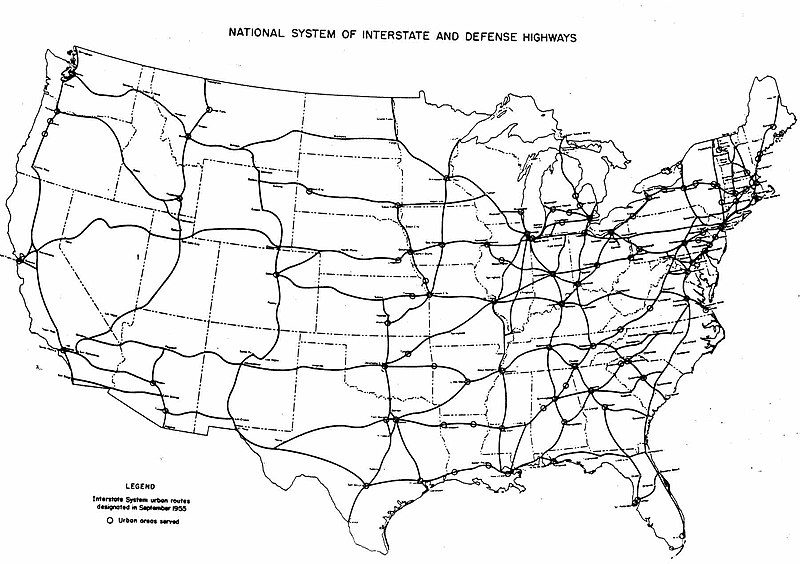Ah, Portland. Metropolis of planning, bicycling, and all things creative. A couple of things have piled up in my open tabs or in my reader.
Portland hasn’t seen huge shifts in mode share (as noted here previously – hat tip to Jarrett Walker here and here), despite large investments in light rail, streetcars, and even an aerial tram.
Picture perfect? Aaron Renn penned an op-ed piece for the Oregonian, providing a little perspective about Portland’s image as the perfect planning city. Renn doesn’t question Portland’s overall quality, just if the reputation is deserved or not – if the praise matches the performance.
Renn follows his op-ed with a blog post, delving deeper into the stats, comparing hip and cool Portland to the decidedly less cool Indianapolis.
I note as a positive that Portland was clearly ahead of other similar sized cities in understanding the importance of density, transit, bike lanes, etc. But more importantly, that the “Portland model” had a wide influence in America. Perhaps Portland has had a greater influence on America’s urban environments than any other city its relative size in history. That’s an amazing accomplishment if you think about it. And what’s more, that influence has been a good thing.Naturally, they don’t need me to just tell them “It’s all good”. So on the areas for development side I noted their underperforming economy. It’s not so much that Portland is particularly suffering in this recession, though it is, or that it is a failure in an absolute sense, which it is not. No, rather I look at it like diving. There are two aspects: execution and degree of difficulty. Portland has very low degree of difficulty, so we would expect it to perform much better.
Renn’s takeaway is that policy can only do so much. That’s true, to some extent – policy sets the rules in place, and the dynamics of the city have to do the rest. There are also factors well beyond any city’s (or any region’s) control.
Like any data set, it’s wise to look at the limitations of the data.
Putting the emphasis back on Portland’s transportation policies, Jarrett Walker looks at car ownership rates in cities across the US – and Portland doesn’t even crack the top 50. (DC checks in at #4, with a 36.93% of households owning no cars – jurisdictions 1, 2, and 3 are all in Metropolitan NYC). Walker identifies three criteria that correlate with high rates of non-auto households – age of the city’s fabric (with an anecdotal correlation to density and design), poverty, and presence of major universities.
So here’s the question: How long will it take for a city that lacks age, poverty, or dominant universities to achieve the kind of low car ownership that these 50 demonstrate? How soon, for example, will a city be able to create a combination of density, design, and mixture of uses that yields the same performance as an old city that naturally has those features?
Portland is probably the most promising such city in the US, and it’s not on the list. Only 14% of households there don’t have a car, so it’s probably well down in the second 50. Like many cities, Portland has been doing everything it can to build a dense mixed-use urban environment. It’s the sort of city that convinces the Safeway supermarket chain to rebuild their store with townhouses and residential towers on top. But while people are moving into the inner city, they don’t seem to be selling their cars when they do, nor do they seem to be going to work by transit.
For me, the takeaway from this is the long lag time and staying power of transportation infrastructure. Even as older cities, built around walking and transit, have decayed, they remain more car-less than their fellow cities built with the car, to say nothing of cities built for the car.
I recall attending a lecture in grad school (and I cannot for the life of me remember who exactly gave it), noting the staying power of our street networks and other infrastructure patterns. In short, land use changes on a big, extensive scale take a long time to happen. Walker continues:
How much are zero-car households constrained by overly abundant residential parking? It’s still hard to sell a modern tower unit without a parking space included, even though there are many such units in pre-car cities like Manhattan and San Francisco, and many are quite desirable. What would it take to replicate that desirability in new inner cities like Portland’s? Couldn’t it be done at least in the name of affordable housing?
All good questions to ask, even if only asked rhetorically.
Finally, some pretty pictures. Free Association Design has some great planning graphics from Portland. Fun stuff to look at.

Portland's public realm. Image from the City of Portland

Portland's zoning code, graphically depicted w/ height limits and mixed uses (red shading).
Good stuff.



















